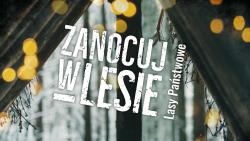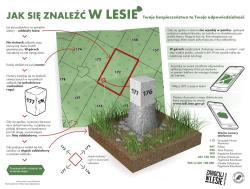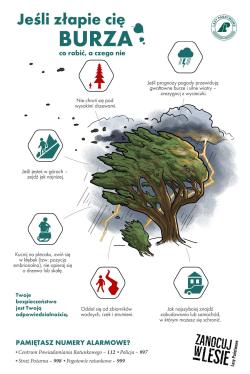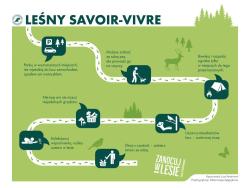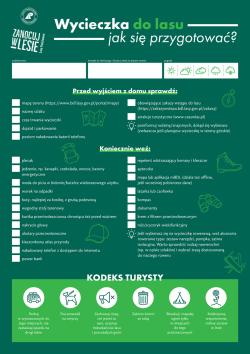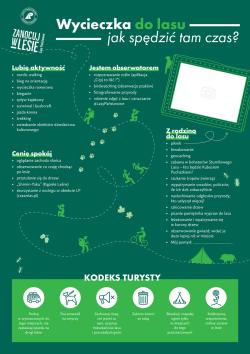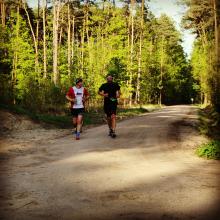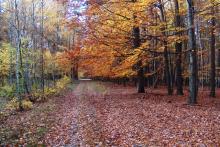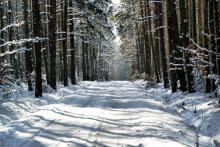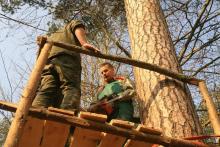 Asset Publisher
Asset Publisher
Polish forests
Poland is in the European lead, while concerning the area of all forests. They cover about 29,2 % of the country territory, and grow within the area of 9,1 million hectares. The overwhelming majority of the forests is state owned, of which almost 7,6 million hectares are managed by the State Forests National Forest Holding..
The number of Polish forest is still growing. The forestation rate of the country has increased from 21 % in 1945 to 29,2 % at the moment. Between 1995 and 2008, the forest area increased by 310 thousand ha. The basis for afforestation works is the "National Programme for Increasing the Forest Cover" (KPZL), assuming an increase of the forestation rate up to 30 % by 2020 and up to 33 % by 2050. Polish forests abound in flora, fauna and fungi. 65 % of the total number of animal species live there.
The forests grow in our country on poor soils, mainly because of the development of the agriculture in previous years. It influences the distribution of the types of the forest sites in Poland. Over 55 % of the forest areas is covered with coniferous forests. In other areas, there are forest sites, mainly the mixed ones. Their small part constitute alder and riparian forests – not more than 3 %.
In the years 1945 – 2011 the area of natural deciduous tree stands within the area of the State Forests National Forest Holding increased from 13 to 28,2 %.
Within the lowlands and uplands the most often occurring tee species is pine. It covers 64,3 % of the forest area of the State Forests National Forest Holding and 57,7 % of private and commune forests. In the mountains the predominant species is European spruce ( in the west) and European spruce with beech (in the east). Domination of pine is the result of carrying on sustainable forest management in the past. Once, the monocultures (crops or cultivations of one species) were the answer to the great demand of industry for wood. Such forests appeared to be quite fragile to climatic factors. They also were often the prey of pests' expansion.
In Polish forests, the share of other tree species, especially deciduous trees have been systematically increasing. The foresters have stepped aside from monocultures – that is why, they try to fit specific species of the forest stand to the natural stand, that would be proper for the given area. Thanks to that, in the years 1945 – 2011, the area of the deciduous tree stands within the lands of the State Forests National Forest Holding increased from 13 to 28,2 %. There occur more and more frequently the following tree species: oaks, ashes, maples, sycamore maples, elms, but also birches, beeches, alders, poplars, hornbeams, aspens, tilias and willows.
Our forests are the most often represented by the forest stands aged 40 to 80 years. The average age of the forest equals 60 years. More and more trees are of big size at the age over 80 years. Since the end of the Second World War, the forests' area has increased up to almost 1,85 million hectares.
Raport o stanie lasów w Polsce 2012
 Asset Publisher
Asset Publisher
program "zanocuj w lesie"
program "zanocuj w lesie"
Nadleśnictwo Spała przystąpiło do Programu „Zanocuj w lesie”, który powstał w ramach kontynuacji założeń zawartych w ogólnopolskim pilotażu udostępnienia obszarów leśnych celem uprawiania aktywności typu bushcraft i surwiwal. Po ponad rocznym okresie trwania pilotażu, ankietowaniu osób korzystających z obszarów pilotażowych, zarządców terenu, rozmowach ze środowiskiem bushcraftowym i surwiwalowym wykiełkował pomysł przekształcenia pilotażu w stały program pn. „Zanocuj w lesie”.
W Nadleśnictwie Spała, od 1 maja będą udostępnione obszary leśne, gdzie miłośnicy biwakowania oraz nocowania w lesie będą mogli to robić bez obawy o naruszenie ustawy o lasach. Jest to niemalże 1300 ha lasu położonego pomiędzy Pilicą a drogą Krajową nr 48. Obszar udostępniony do celów programu obejmuje 3 leśnictwa: Luboszewy, Borki oraz Żądłowice. Teren jest bardzo malowniczy i każdy powinien znaleźć coś dla siebie.
[mapa obszaru z zaznaczonymi istniejącymi obiektami typu: parking, miejsce do rozpalenia ogniska itp.]
Lokalizacja widoczna jest również na mapie https://www.bdl.lasy.gov.pl/portal/mapy oraz z poziomu aplikacji Mbdl: https://play.google.com/store/apps/details?id=pl.gov.lasy.bdl&gl=PL (android) lub: https://apps.apple.com/us/app/mbdl/id1388815663 iPhone, z menu wybierz – mapy BDL – mapa zagospodarowania turystycznego.
Pamiętaj, aby dobrze przygotować się do wyprawy na łono natury. W miejscu, do którego się udasz nie będzie ławek, stołów, kuchni, czy wiaty, w której możesz schronić się przed wiatrem. Ubierz się odpowiednio. Przygotuj suchy prowiant, bo na terenie Spalskich obszarów nie można rozpalać ognisk. Nie zapomnij, aby posprzątać po sobie wszystkie ślady, które zostawiłeś. Miejsce, w którym biwakujesz musisz przywrócić do stanu wyjściowego.
Zanim udasz się na wyprawę koniecznie zapoznaj się z:
1. Regulaminem korzystania z obszaru [link do regulaminu]
2. Mapą okresowego zakazu wstępu do lasu https://zakazywstepu.bdl.lasy.gov.pl/zakazy/ Przed wyjściem do lasu, sprawdź, czy obszar nie znajduje się na obszarze objętym zakazem.
3. Zasadami bezpiecznego korzystania z lasu.
4. Z informacjami, gdzie mogą być prowadzone prace gospodarcze. Na powierzchnie te obowiązuje zakaz wstępu. Informacje te znajdziecie na stronie www nadleśnictwa.
5. W okresie jesiennym i zimowym z terminami polowań zbiorowych, które koła łowieckie mają obowiązek podawać do wiadomości gmin. Na obszar na którym odbywa się polowanie, obowiązuje zakaz wstępu!
Więcej informacji dotyczących prowadzonej gospodarki łowieckiej dostępne jest po skontaktowaniu sie z właściwym kołem bądź zarządcą obwodu łowieckiego.
Kontakt:
Koło Łowieckie „Dubelt”: https://www.dubelt.pl/
OHZ Spała: spala@lodz.lasy.gov.pl
OHZ Smardzewice: smardzewice@lodz.lasy.gov.pl
6. Jeśli Twój nocleg przewiduje więcej niż 2 noce lub/i więcej niż 9 osób w jednym miejscu musisz napisać i wysłać formularz zgłoszenia noclegów i uzyskać zgodę nadleśnictwa. Zgłoszenie następuje poprzez napisanie oraz wypełnienie formularza i przesłanie go na adres spala@lodz.lasy.gov.pl nie później niż 2 dni robocze od planowanego noclegu. Preferowany jest formularz w wersji elektronicznej (co powinien zawierać zawarte jest w regulaminie obszarów „Zanocuj w lesie”).
Pozytywna odpowiedź mailowa z nadleśnictwa jest wyrażeniem zgody na zaplanowane noclegi.
Kontakt do koordynatora programu w nadleśnictwie:
mateusz.pawelec@lodz.lasy.gov.pl
Wszystkich odwiedzajacych nasze lasy (nie tylko nocujących) zachęcamy do wypełnienia ankiety. Jesteśmy bardzo ciekawi Waszych opinii.
Zapraszamy


 fot. Paweł Fabijański
fot. Paweł Fabijański
 fot. Paweł Fabijański
fot. Paweł Fabijański
 fot. Paweł Fabijański
fot. Paweł Fabijański

